Some plants don’t just look good—they taste amazing too! “Edimental” plants are the perfect blend of edible and ornamental, bringing both beauty and function to your garden. These unique varieties offer stunning foliage, vibrant flowers, or striking forms while also providing a tasty harvest. Whether you’re working with a small urban garden or a sprawling backyard, these plants let you enjoy the best of both worlds.
Consider adding colorful Swiss chard, which boasts bright stems and tender leaves, or nasturtiums, which produce edible flowers with a peppery bite. Red-veined sorrel, with its eye-catching foliage, makes a fantastic border plant while doubling as a tangy salad green. Many fruiting plants, like purple basil or scarlet runner beans, add both structure and delicious rewards. Choosing “edimental” plants means your garden stays stunning year-round, while also providing fresh flavors straight from your yard!
Nasturtiums
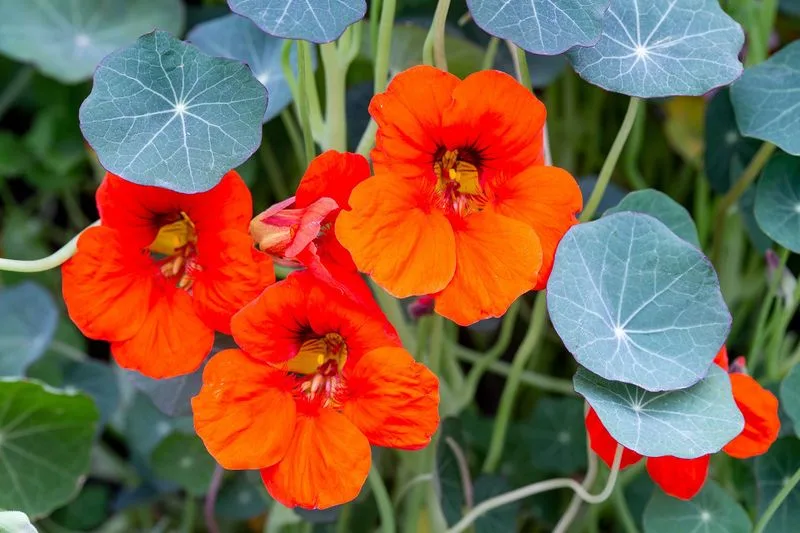
Nasturtiums are a gardener’s delight, offering bright, peppery-flavored flowers and leaves. Their colors range from fiery oranges to sunny yellows. These plants thrive in poor soil, making them low-maintenance. Both leaves and flowers are edible, adding a spicy kick to salads. Plant them strategically around your garden for a splash of color and spice. Their trailing habit can also cover unsightly garden areas. In addition to their beauty and taste, nasturtiums attract beneficial insects, enhancing your garden’s ecosystem. Enjoy this vibrant addition, knowing it serves multiple purposes.
Swiss Chard
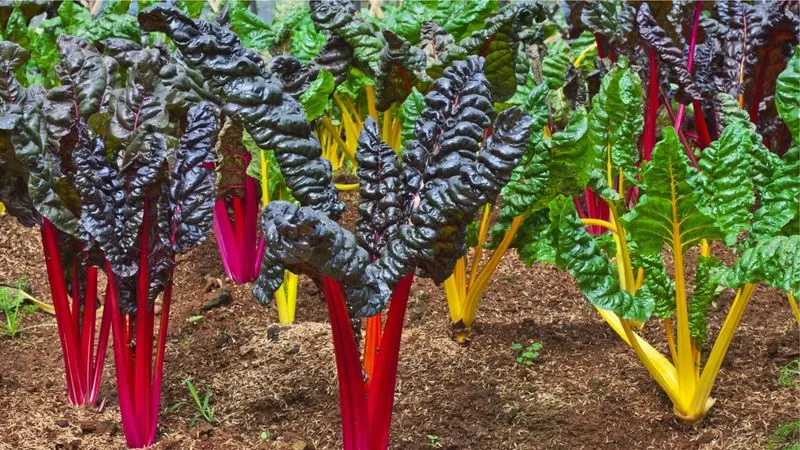
Swiss chard is known for its rainbow-colored stems and hearty green leaves. It stands out in any garden with its striking appearance. This leafy green is not just visually appealing; it’s nutrient-rich and versatile in the kitchen. Use it in soups, salads, or as a spinach substitute. Its resilience makes it easier to grow in various climates. Swiss chard can be harvested multiple times, offering a continuous supply. As you enjoy its beauty, you’ll also appreciate its culinary flexibility. A true garden staple with both form and function.
Borage
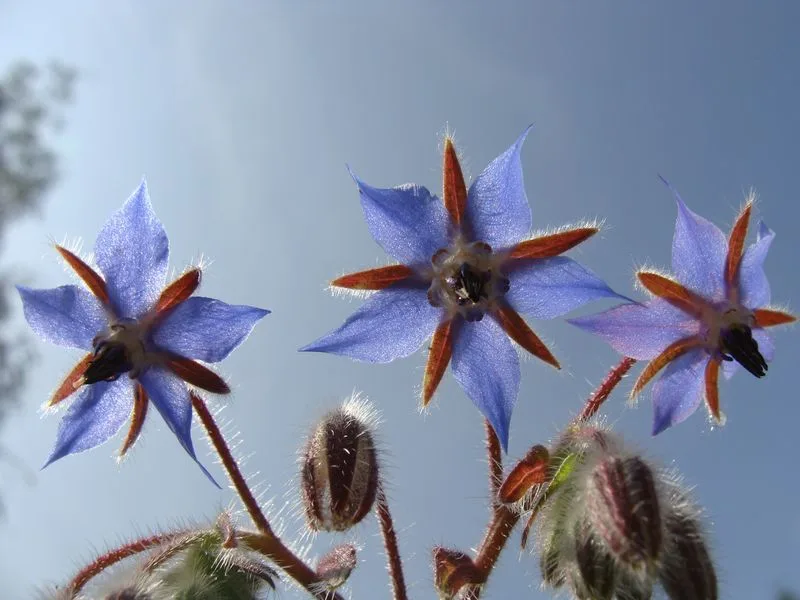
Borage is a unique plant known for its star-shaped blue flowers. These blossoms bring a touch of whimsy and are favored for their cucumber-like flavor. Great for garnishing drinks and desserts, borage is also a bee magnet, promoting pollination in your garden. The leaves are edible and can be used in salads or teas. Borage thrives in well-drained soil and sunny spots. Its ability to self-seed means you’ll enjoy its benefits year after year. This plant is both a visual treat and a practical choice for enhancing garden biodiversity.
Purple Basil
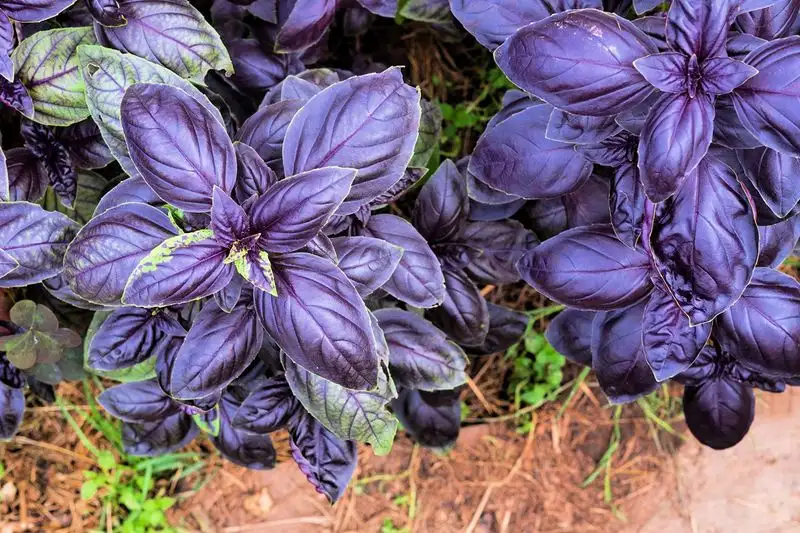
Purple basil offers aesthetic charm and a sweet, slightly spicy flavor. Its dark leaves provide a striking contrast against traditional green herbs. This basil variety is perfect for adding color to sauces, salads, and drinks. It thrives in warm, sunny environments and benefits from regular trimming. As the plant matures, its aroma intensifies, making it a fragrant garden addition. Besides culinary uses, purple basil deters pests, acting as a natural repellent. This herb is a must-have for those who appreciate beauty and functionality in their garden.
Calendula

Calendula, with its bright petals, is often called “pot marigold.” These flowers are not only beautiful but also edible, adding a splash of color to dishes. Known for its medicinal properties, calendula can be used in teas and balms. This hardy plant thrives in most soils and attracts pollinators, enriching your garden’s ecosystem. Regular deadheading encourages more blooms, extending its flowering season. Enjoy calendula in salads or as a natural dye. It’s a versatile plant that combines beauty with practical uses, making it a favored choice.
Artichoke
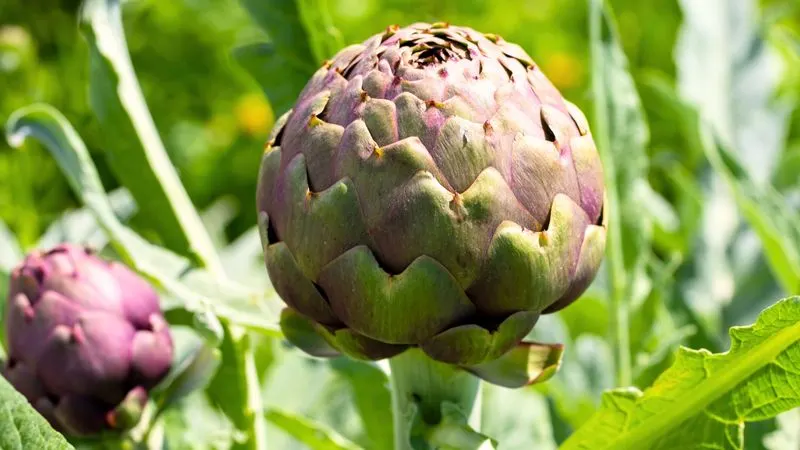
Artichokes bring a touch of the exotic with their large, thistle-like appearance. The silvery foliage adds texture to garden landscapes. Known for their delicious buds, artichokes require space and patience to cultivate. Once established, they produce annually and are a gourmet’s delight. Harvesting the buds before they flower ensures the best flavor. Artichokes prefer mild climates and well-drained soil. Their structural beauty and culinary value make them a distinguished choice for gardeners looking to diversify their plant selection. Enjoy the dual benefits of this striking and tasty plant.
Violas
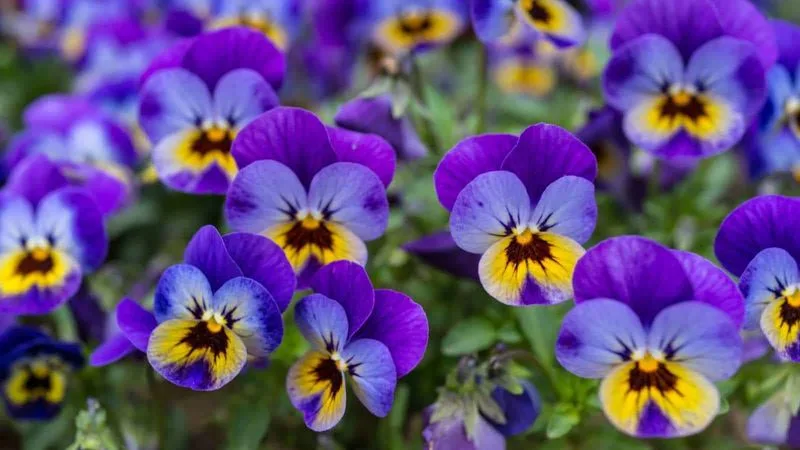
Violas are charming additions to any garden, known for their cheerful, vibrant flowers. These plants are easy to grow and maintain, making them suitable for beginners. Their edible blossoms add a sweet touch to salads and desserts. Available in a variety of colors, violas can complement any garden theme. They thrive in cooler climates and prefer partial shade. Regular watering and deadheading promote continuous blooming. Besides their beauty, violas attract beneficial insects, supporting a healthy garden ecosystem. Delight in their simplicity and versatility both in the garden and on the plate.
Scarlet Runner Beans
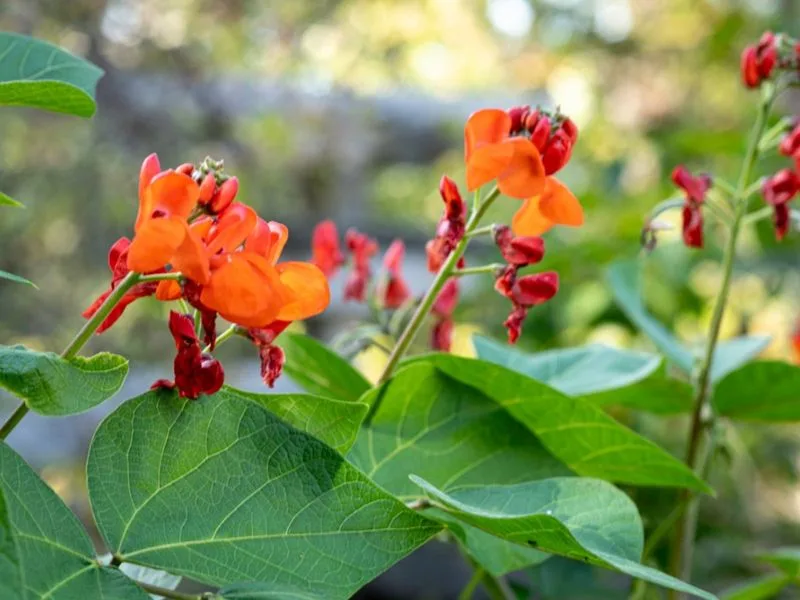
Scarlet runner beans are known for their vibrant red flowers and lush green foliage. These climbing plants are ideal for adding vertical interest to gardens. Both the pods and beans are edible, providing a nutritious addition to meals. These plants prefer sunny spots and rich, well-drained soil. Regular harvesting encourages more blooms and fruits. Their ability to attract hummingbirds adds dynamic movement to your garden. Enjoy the visual appeal and practical benefits, using these beans in stews, salads, or simply as a delightful garden feature. A true multitasker in any garden.
Lavender
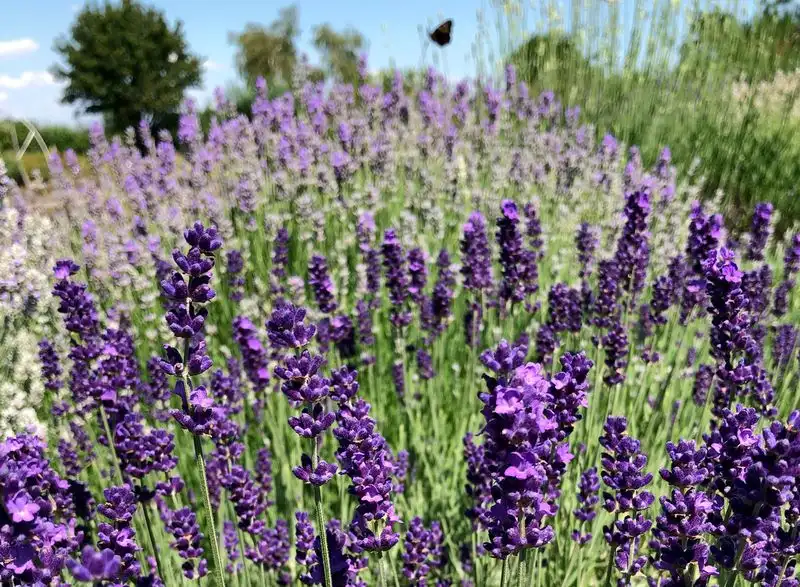
Lavender is celebrated for its soothing scent and striking purple blooms. A symbol of serenity, it’s a favorite for sensory gardens. This drought-tolerant plant thrives in sunny, well-drained areas. Lavender flowers can be used in culinary dishes, teas, and sachets. Their aromatic presence deters pests, serving as a natural garden protector. Pruning after flowering encourages bushy growth and prolongs plant life. Whether in borders or pots, lavender transforms spaces into calming retreats. Its multifunctional nature, from aesthetic to practical uses, makes it a staple in gardens worldwide.
Daylilies
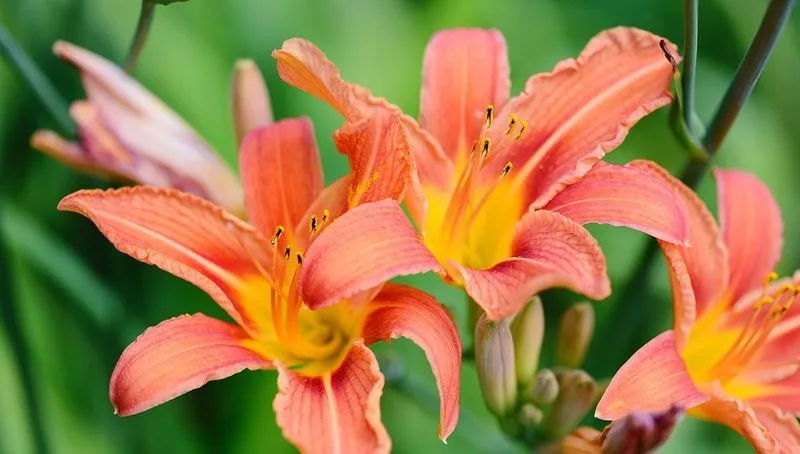
Daylilies are a garden favorite for their vibrant blooms and resilience. Each flower lasts just a day, but the plant produces multiple blooms for a lasting display. These flowers are edible, offering a subtle sweetness that complements salads and desserts. Daylilies thrive in diverse conditions, from full sun to partial shade. Their low-maintenance nature makes them suitable for novice gardeners. Regular watering ensures prolific flowering. Beyond their beauty, daylilies attract pollinators, supporting garden biodiversity. Whether used decoratively or as a culinary ingredient, they enhance gardens in multifaceted ways.
Fennel
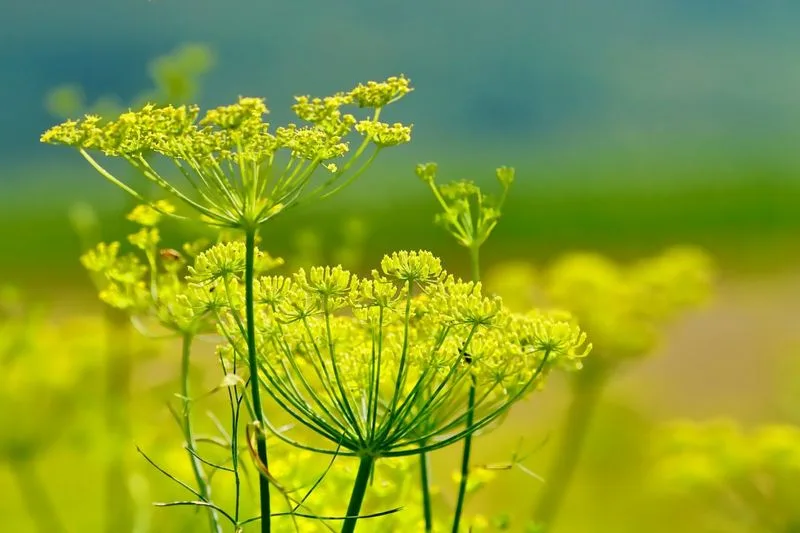
Fennel is a versatile plant known for its aromatic, feathery foliage and unique anise flavor. It provides both visual interest and culinary benefits. The bulb, stalks, and leaves are all edible, commonly used in salads, soups, and stews. Fennel thrives in sunny spots with well-drained soil. Its tall stature makes it an excellent backdrop plant. Regular harvesting promotes lush growth. Apart from its culinary appeal, fennel attracts beneficial insects like ladybugs, enhancing garden health. This plant’s adaptability and multiple uses make it an invaluable addition to any garden.
Hostas
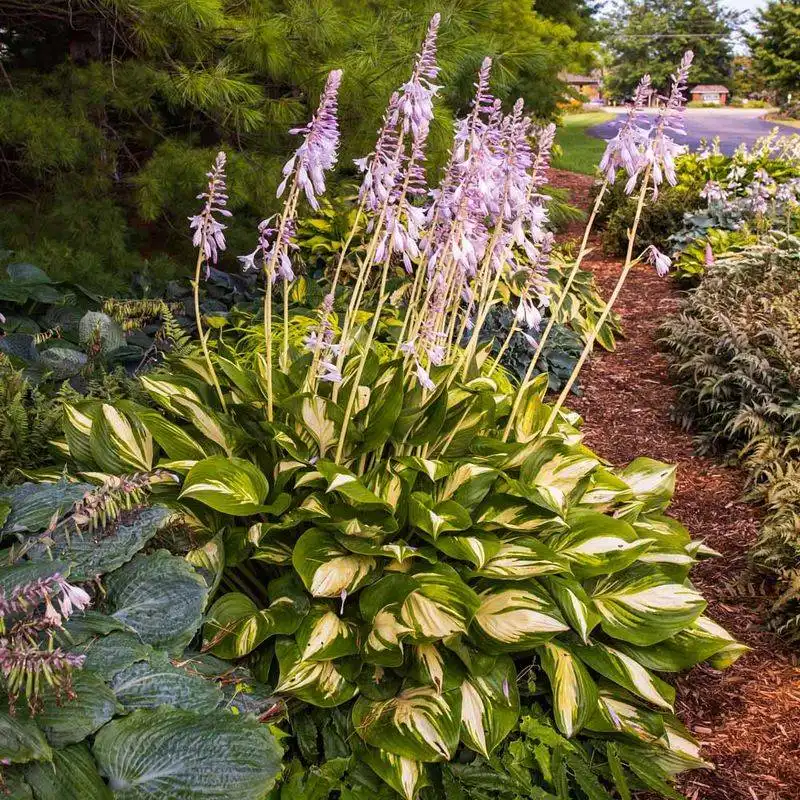
Hostas are celebrated for their lush foliage and shade tolerance. Their broad, textured leaves create visual interest in shaded garden areas. While primarily grown for decoration, young hosta shoots are edible and can be sautéed or added to salads. These plants prefer rich, well-drained soil and regular watering. Hostas are low maintenance and can thrive in various climates. Their ability to fill spaces with greenery makes them popular among gardeners. In addition to aesthetic value, they provide garden structure and diversity. Hostas combine beauty with unexpected culinary potential.
Chives
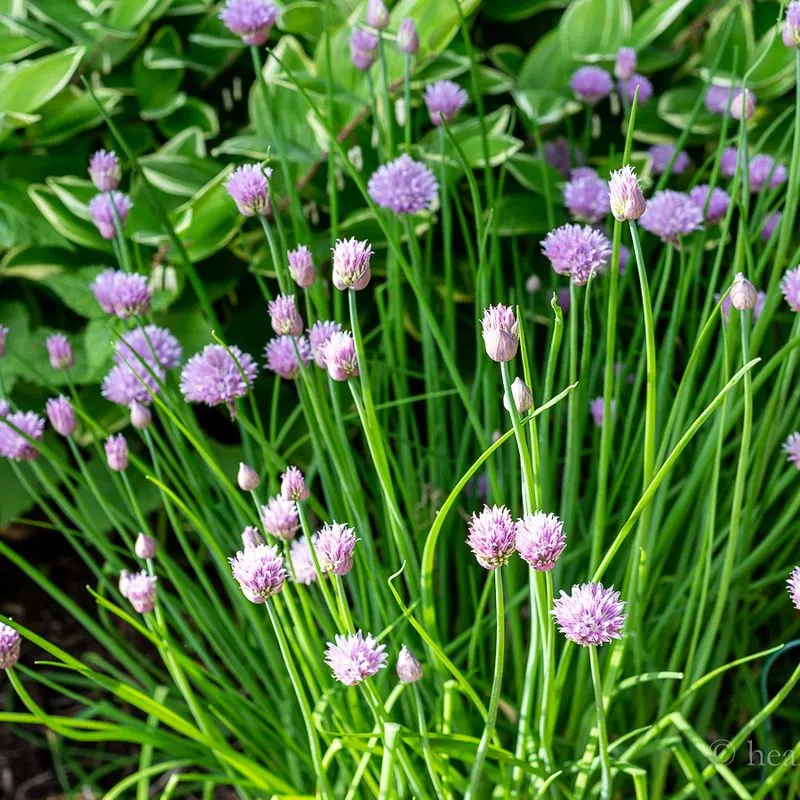
Chives bring both flavor and flair to gardens. These slender, onion-flavored herbs are topped with charming purple flowers. They’re easy to grow in pots or garden beds, preferring full sun and well-drained soil. Regular trimming encourages fresh growth and prevents flowering, maintaining flavor. Both leaves and blossoms are edible, perfect for garnishing meals. Chives also deter garden pests, offering a natural protective benefit. Their adaptability and dual-purpose nature make them a must-have for herb enthusiasts. Enjoy their culinary versatility and pest-repelling properties.
Red Mustard Greens
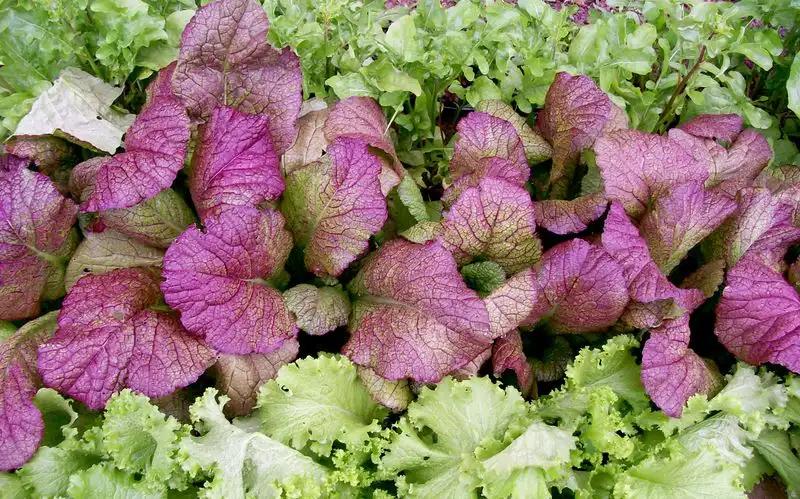
Red mustard greens are striking with their burgundy leaves and spicy flavor. This plant adds color and texture to any garden. The leaves are edible and can be used in salads, sautés, and sandwiches. Red mustard greens prefer sunny spots and well-drained soil. They’re resilient and can tolerate mild frosts, extending their growing season. Regular harvesting encourages new growth, providing a continuous supply. Beyond culinary uses, their bold presence deters pests, acting as a natural repellent. A vibrant choice for gardeners seeking both beauty and utility.
Pansies
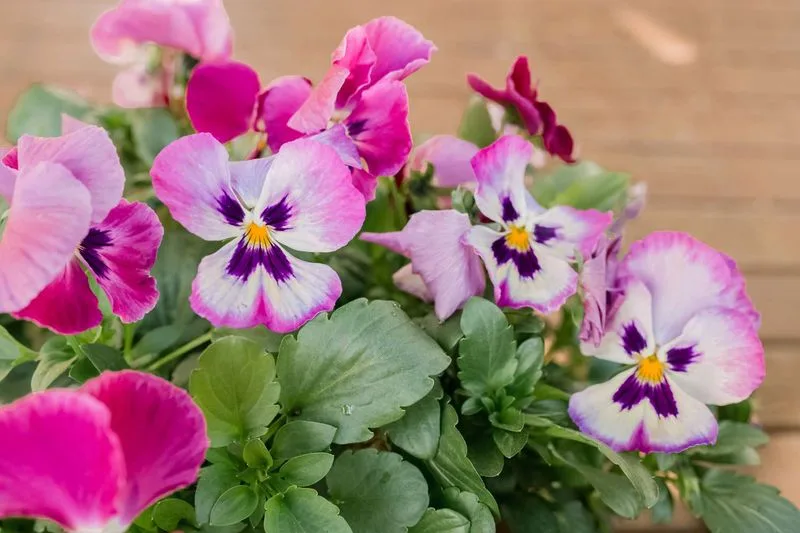
Pansies charm with their vivid colors and unique “faces.” These flowers are easy to grow and maintain, thriving in cool weather. Edible blooms make pansies a favorite for decorating salads and desserts. Available in numerous shades, they offer versatility in garden design. Pansies prefer well-drained soil and regular watering. Deadheading promotes prolonged blooming. Their presence attracts beneficial insects, supporting a healthy ecosystem. Embrace their playful appearance and multifunctional nature, enhancing gardens with both visual appeal and edible elegance. Pansies are a delightful garden addition.
Rosemary
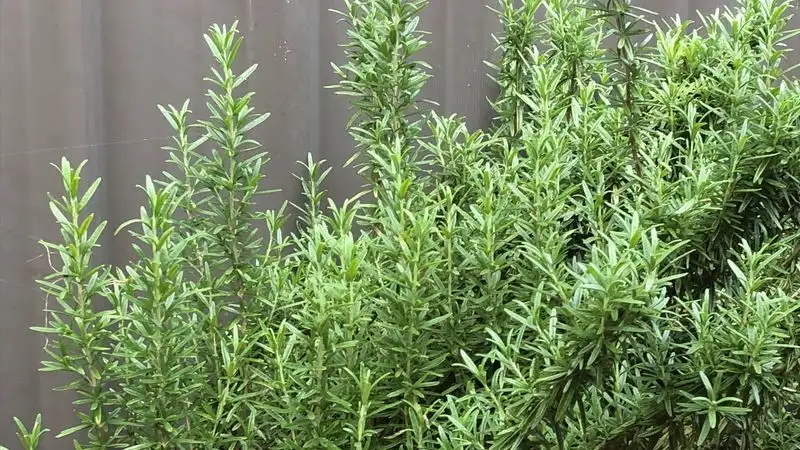
Rosemary is an aromatic herb prized for its culinary and ornamental appeal. Its needle-like leaves and woody stems add texture and fragrance to gardens. Thriving in sunny, well-drained areas, rosemary is drought-tolerant once established. Regular pruning encourages bushy growth and maintains flavor. This herb deters pests and attracts beneficial insects. Rosemary’s versatility extends to kitchen use, perfect for seasoning meats, breads, and teas. Its robust nature and multifunctional qualities make it a staple in gardens. Enjoy its evergreen presence and endless culinary possibilities.
Sage
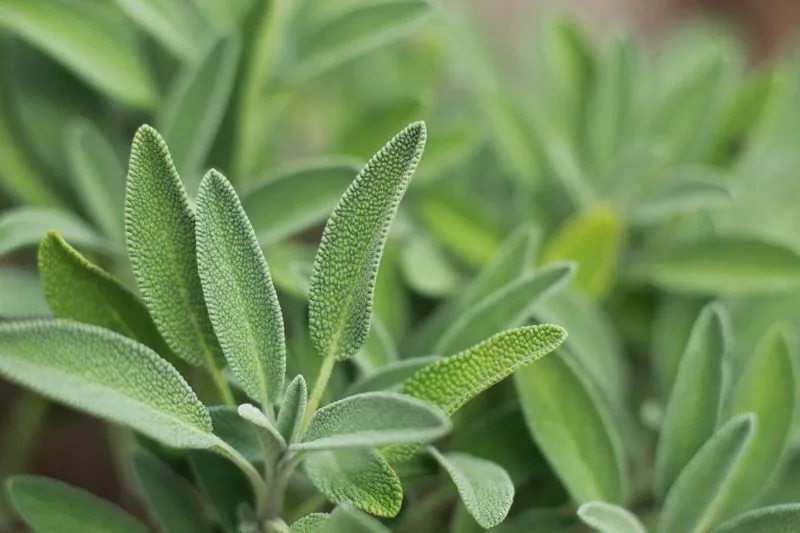
Sage stands out with its soft, grey-green leaves and earthy aroma. A staple in herb gardens, it offers both culinary and ornamental benefits. Sage thrives in sunny, well-drained spots and requires minimal maintenance. Regular pruning enhances its bushy appearance and flavor. The leaves are perfect for seasoning meats, stews, and teas. Beyond culinary uses, sage repels pests, promoting garden health. Its perennial nature ensures a lasting presence, providing beauty and utility year-round. Sage’s resilience and multifunctional appeal make it a favored choice among gardeners.
Ornamental Peppers
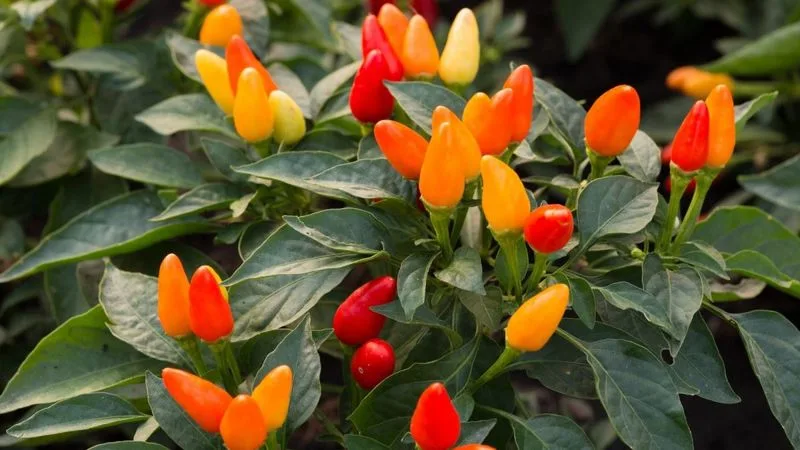
Ornamental peppers add a fiery touch with their bright, colorful fruits. These peppers are not only decorative but also edible, offering varying degrees of heat. Ideal for borders or containers, they thrive in sunny locations. Regular watering and well-drained soil ensure optimal growth. The peppers’ bold colors deter pests, while their compact size suits small spaces. Ornamental peppers provide visual interest and culinary spice, making them a versatile garden addition. Enjoy their dynamic presence, enhancing your garden’s vibrancy and flavor profile with ease.
Sorrel

Sorrel is a tangy green known for its arrow-shaped leaves and citrusy flavor. This perennial herb thrives in sunny or partially shaded areas and prefers moist, well-drained soil. Its leaves are perfect for salads, soups, and sauces, adding a refreshing zing. Sorrel’s low maintenance needs make it an easy addition to any garden. Regular harvesting encourages fresh growth and maintains its vibrant flavor. Beyond its culinary uses, sorrel attracts beneficial insects, supporting garden health. A delightful herb that offers both taste and ecological benefits.
Hyssop
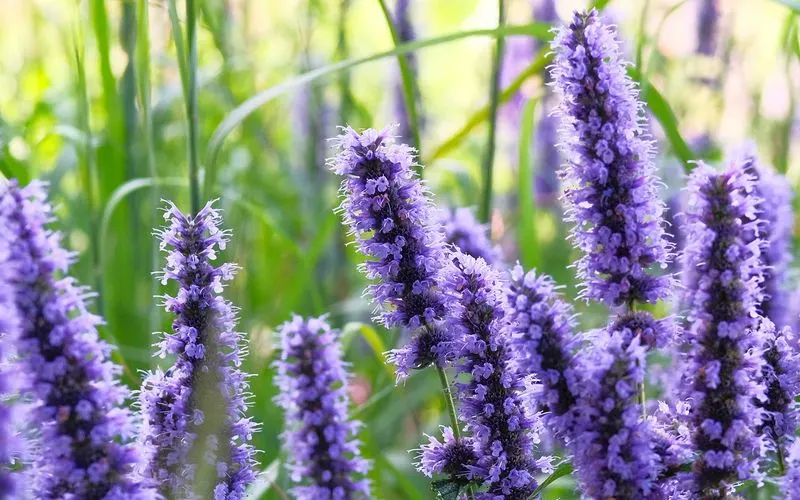
Hyssop is an aromatic herb with narrow leaves and spikes of purple flowers. It’s prized for both ornamental and medicinal uses. Hyssop thrives in sunny, well-drained locations and requires minimal care. The flowers attract bees and butterflies, enhancing garden biodiversity. Its leaves are edible, often used in teas and salads for their minty flavor. Regular pruning promotes bushy growth and prolonged flowering. Hyssop’s dual-purpose nature makes it a valuable garden addition, offering beauty, biodiversity support, and culinary versatility in one compact package.
Chard
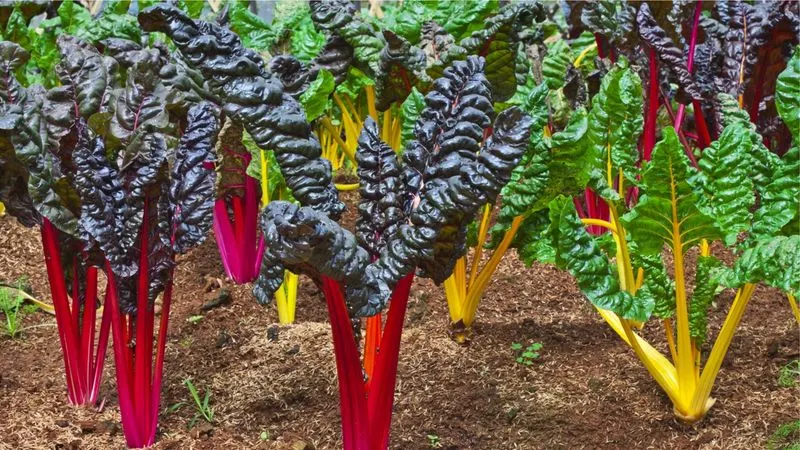
Chard, with its colorful stems and large green leaves, is a vibrant garden staple. It provides both visual appeal and culinary versatility. This leafy green is easy to grow, thriving in various climates and offering multiple harvests. Use its leaves in salads, sautés, or soups for a nutritious boost. Chard prefers sunny spots and well-drained soil. Regular watering and harvesting promote lush growth. Beyond its beauty and taste, chard attracts beneficial insects, supporting garden health. A versatile plant that enhances gardens with both form and function.
Thyme
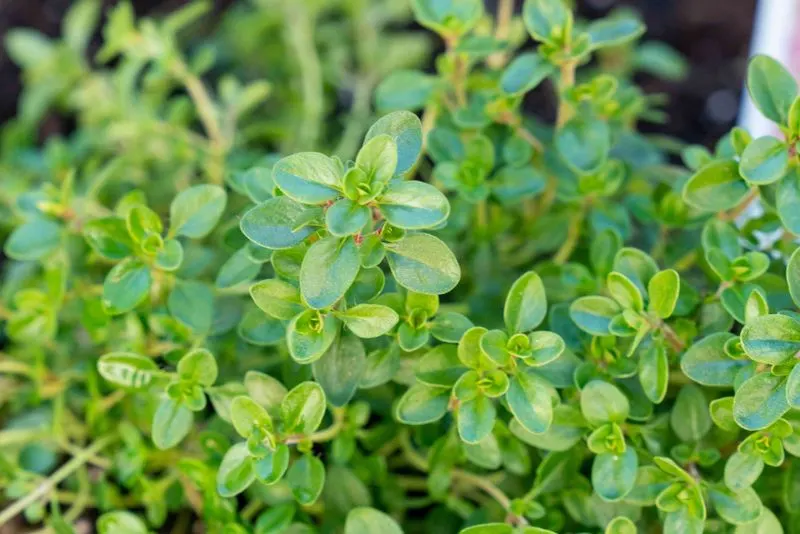
Thyme is a fragrant herb known for its tiny leaves and delicate flowers. Its low-growing nature makes it ideal for borders and ground cover. Thyme thrives in sunny, well-drained areas and requires little maintenance. The leaves are perfect for seasoning meats, soups, and stews, adding a savory note to dishes. Beyond culinary uses, thyme attracts beneficial insects and deters pests, supporting garden health. Its perennial nature ensures a lasting presence, providing flavor and resilience year-round. A staple herb that combines beauty with practicality.
Dill
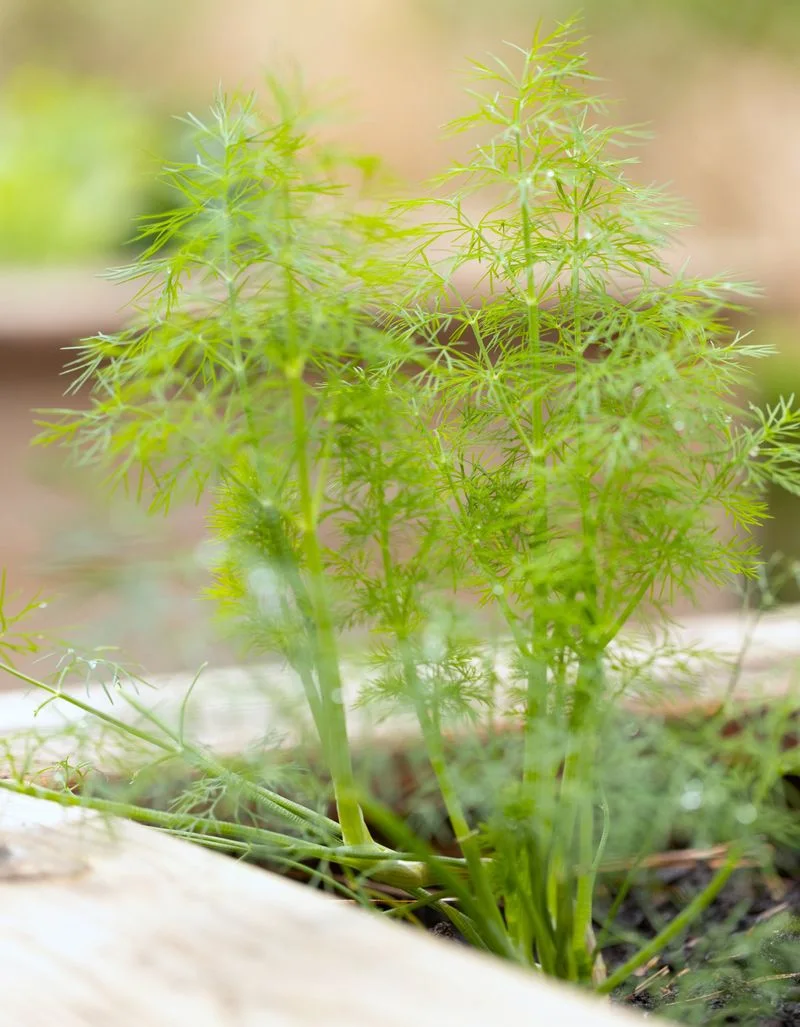
Dill is known for its feathery foliage and delicate yellow flowers. This herb adds height and texture to gardens. Dill thrives in sunny, well-drained areas and requires minimal care. Its leaves and seeds are used in pickling, salads, and dressings for their distinctive flavor. The flowers attract butterflies and bees, enhancing garden biodiversity. Regular pruning encourages lush growth and extends its usability. Dill’s multifunctional nature, from culinary uses to pollinator support, makes it an essential addition to herb gardens. Enjoy its aromatic and visual contributions.
Mint
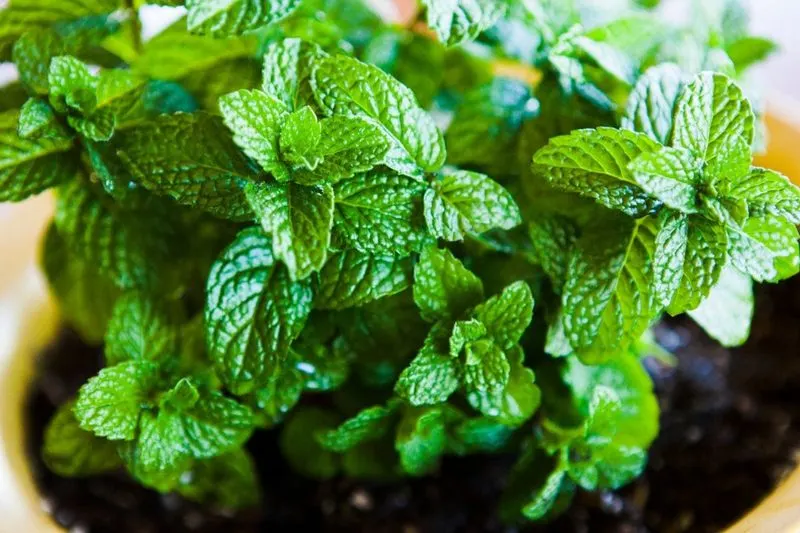
Mint is a refreshing herb known for its vigorous growth and aromatic leaves. It thrives in moist, well-drained areas and can spread quickly, so container planting is recommended. Mint’s leaves are perfect for teas, salads, and desserts, offering a cooling flavor. Regular trimming keeps growth in check and enhances leaf production. Beyond its culinary uses, mint repels pests and attracts beneficial insects. Its robust nature and multifunctional benefits make it a garden favorite. Relish in its fresh scent and versatility, enhancing both culinary creations and garden health.

